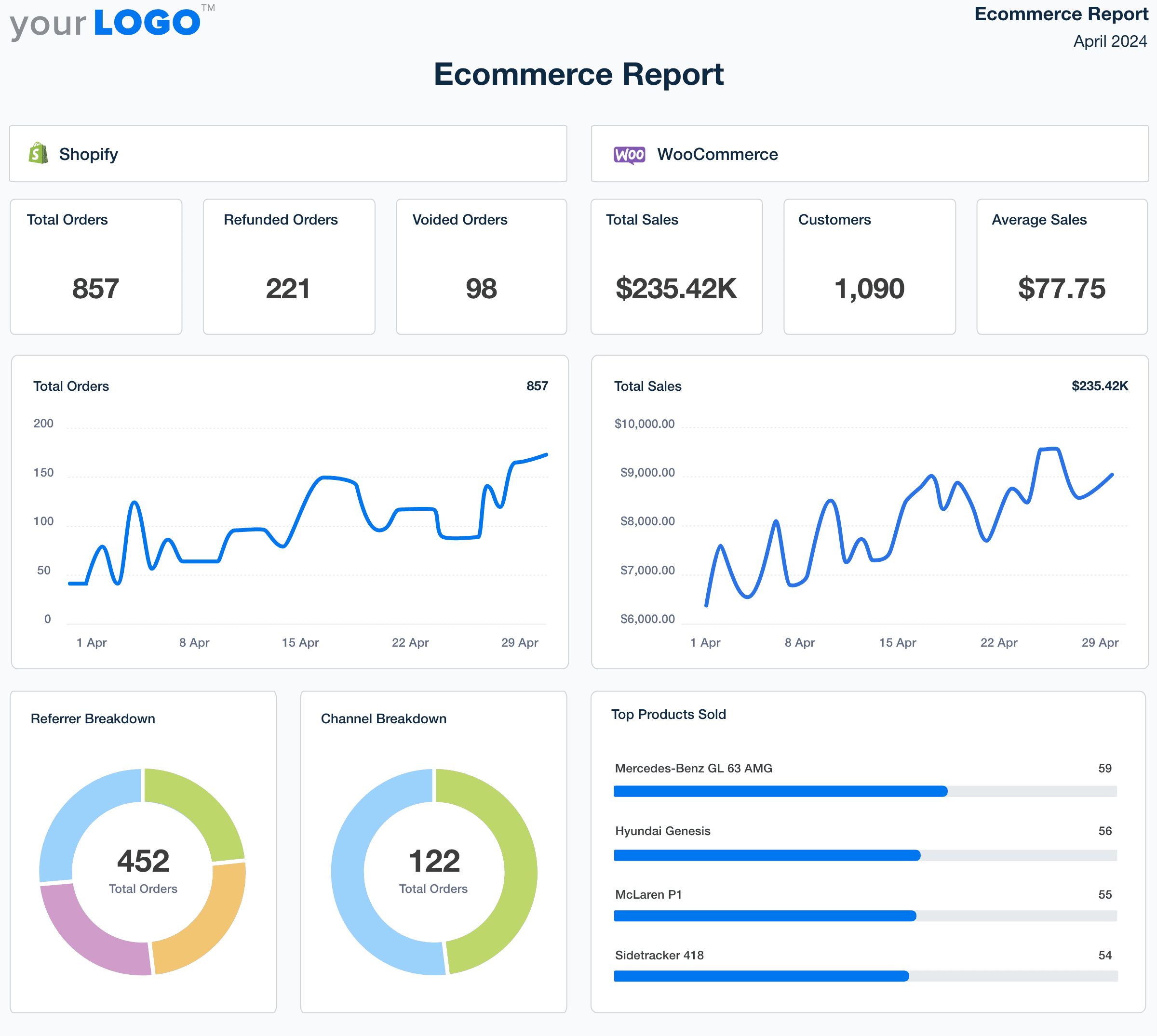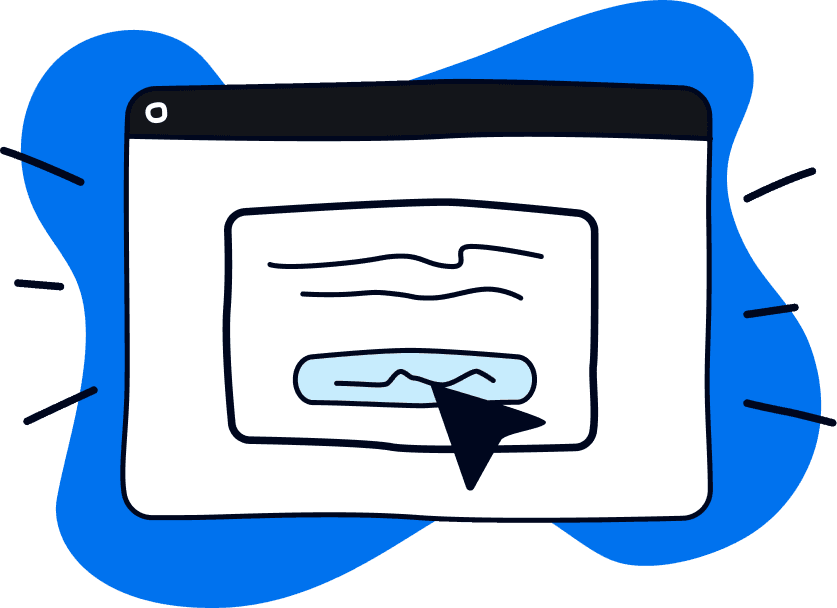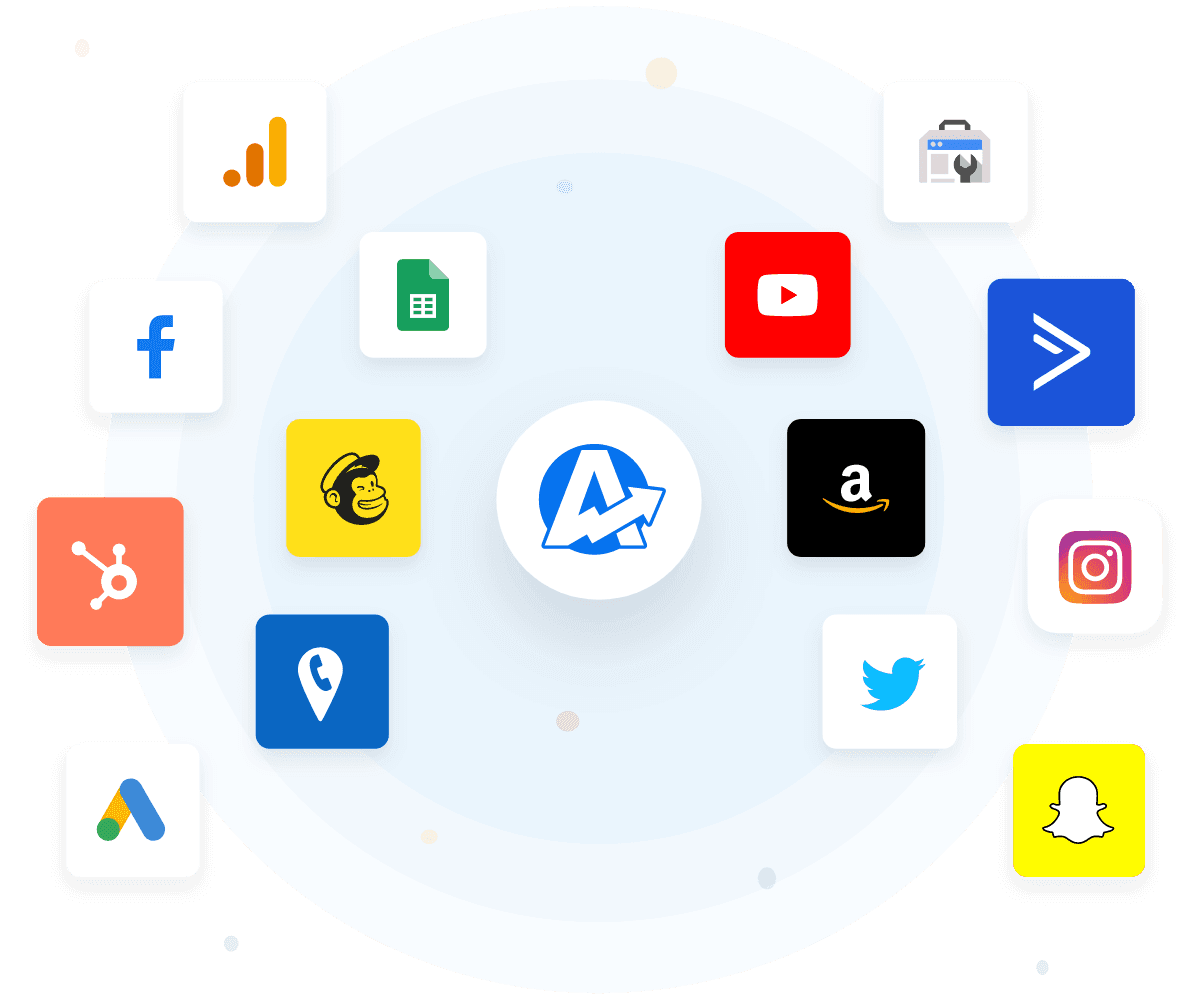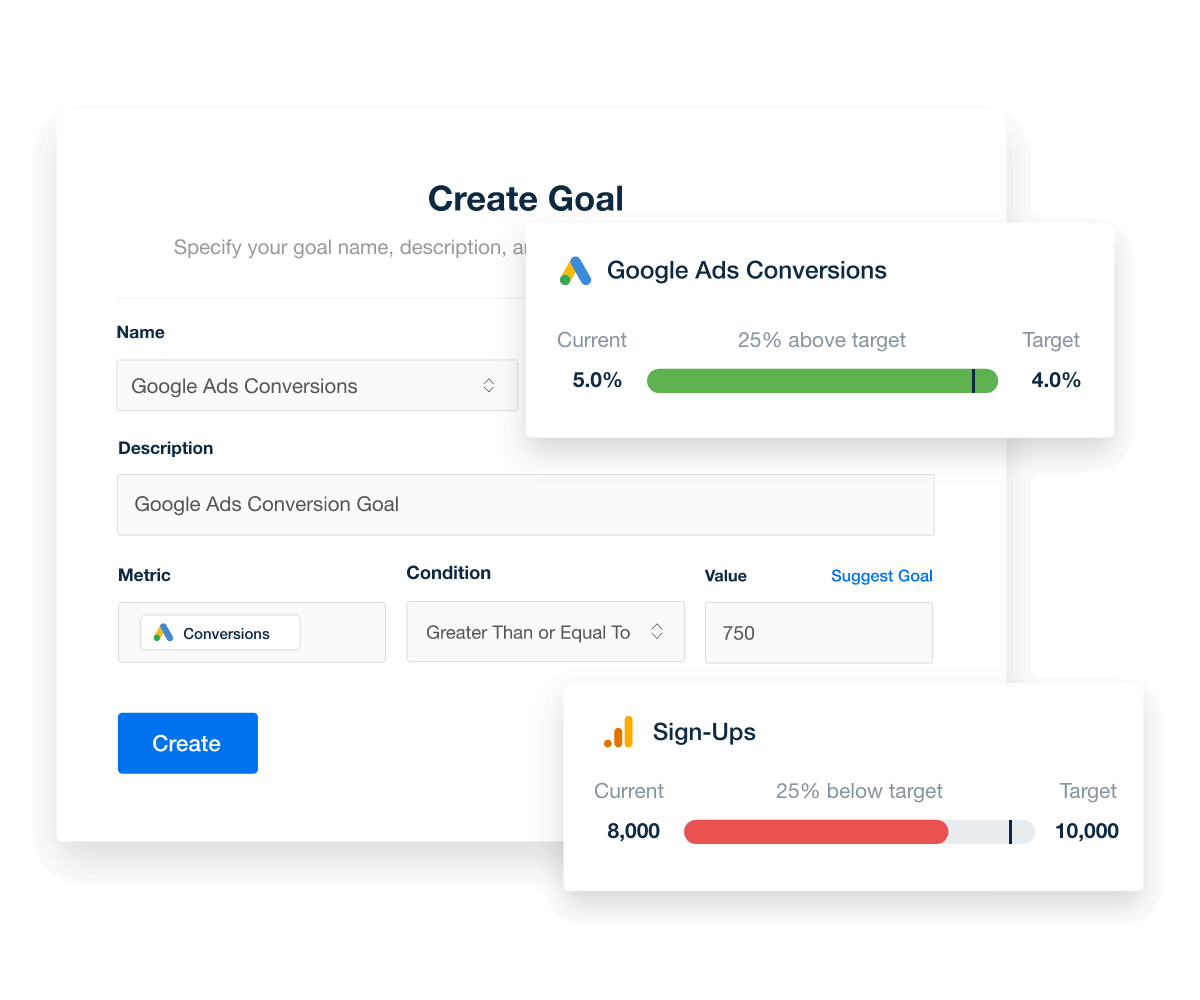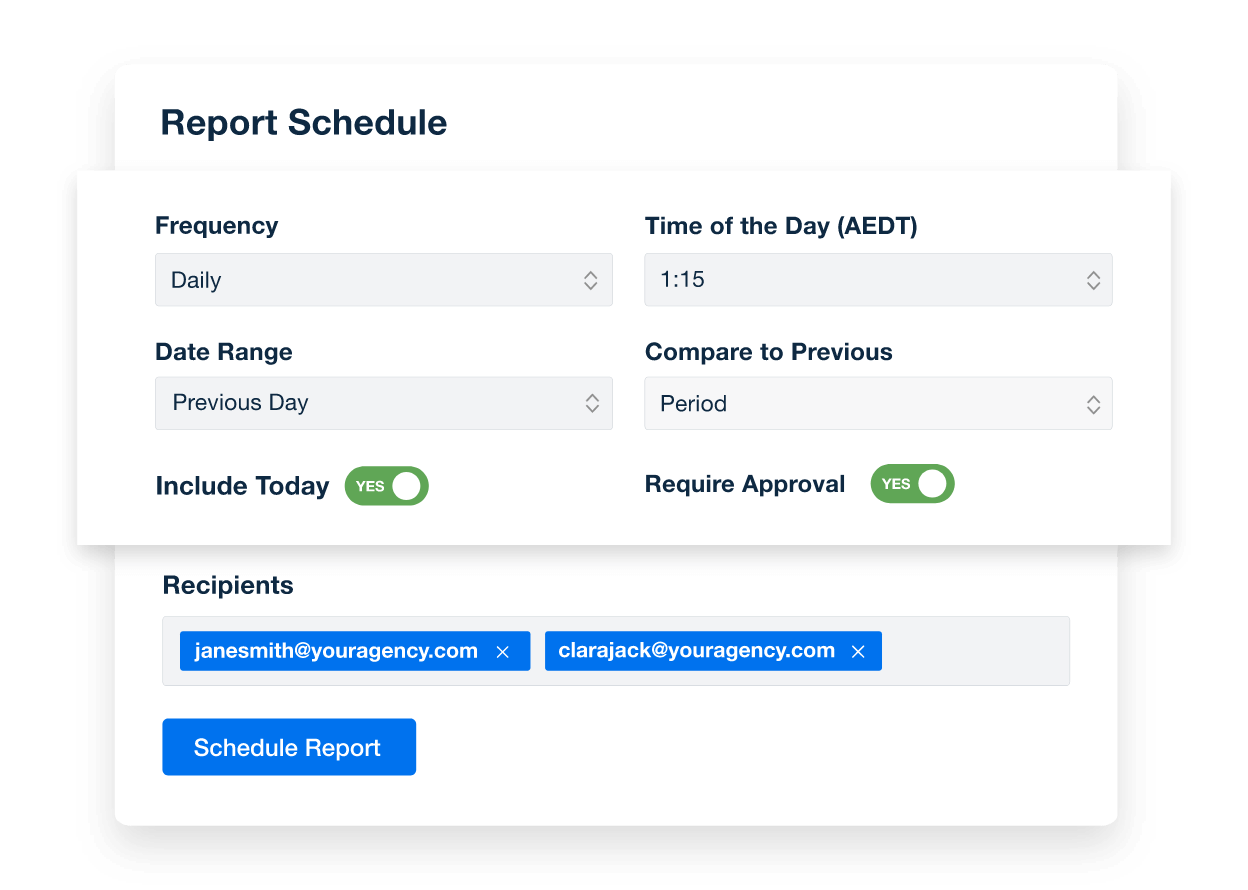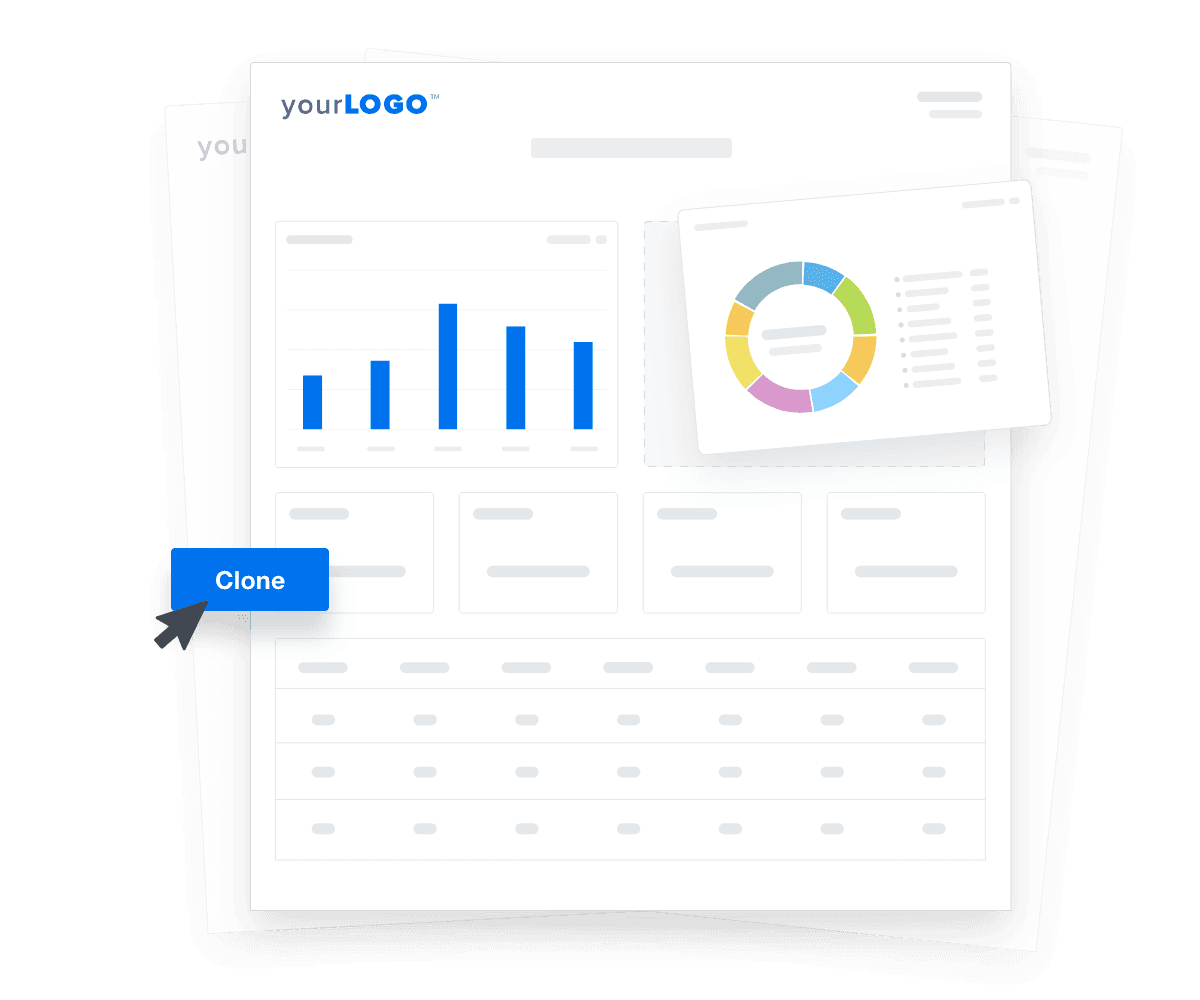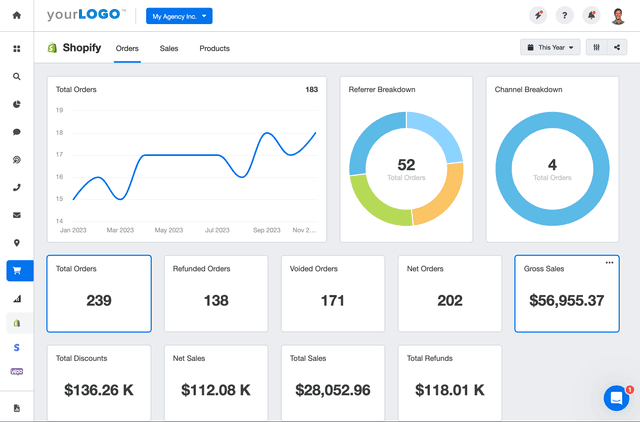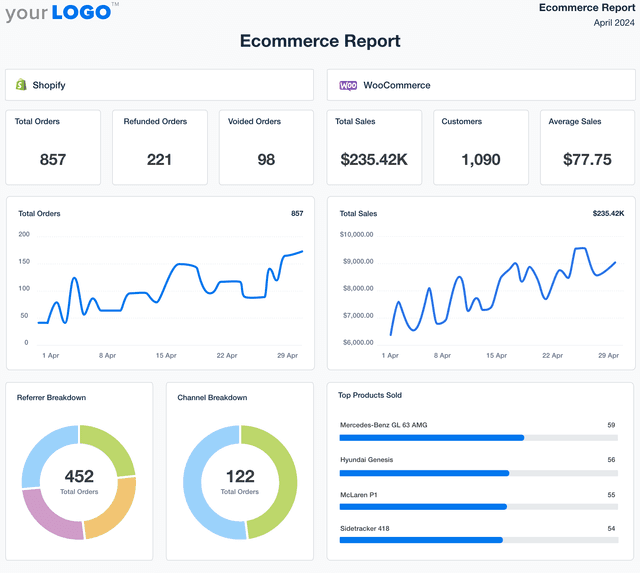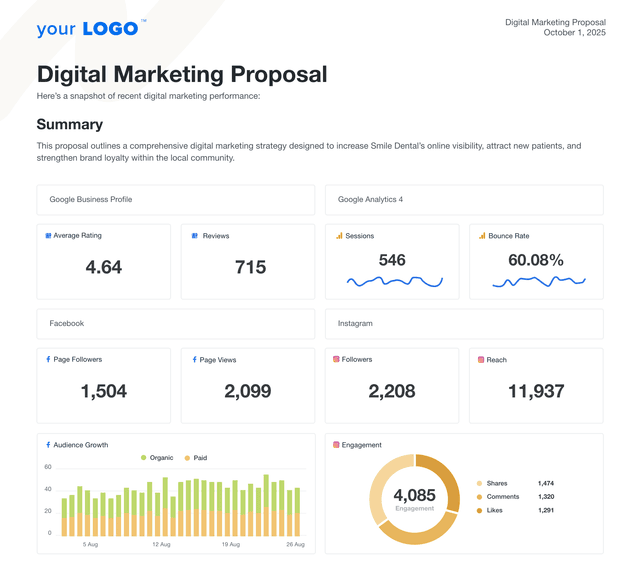WooCommerce Report Template for Streamlined Ecommerce Reporting
Fully Customizable WooCommerce Report Templates
Simplify WooCommerce reporting with a structured, automated template designed for marketing agencies. Deliver clear, professional reports that highlight key ecommerce insights while saving time on manual data work. Customize each report to align with client goals, ensuring they see the metrics that matter most—all in an easy-to-understand format.
Automated reporting platforms and templates are growth accelerators for an agency. A WooCommerce report template creates a scalable system that adapts as your client list expands.
Custom WooCommerce Reports as Unique as Your Agency
10 Key Sections to Include in a WooCommerce Report





